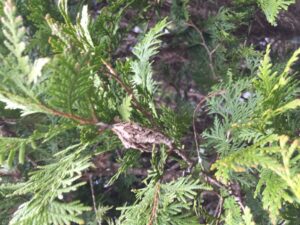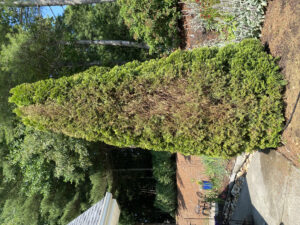Pest Alert – Bagworms
go.ncsu.edu/readext?804514
en Español / em Português
El inglés es el idioma de control de esta página. En la medida en que haya algún conflicto entre la traducción al inglés y la traducción, el inglés prevalece.
Al hacer clic en el enlace de traducción se activa un servicio de traducción gratuito para convertir la página al español. Al igual que con cualquier traducción por Internet, la conversión no es sensible al contexto y puede que no traduzca el texto en su significado original. NC State Extension no garantiza la exactitud del texto traducido. Por favor, tenga en cuenta que algunas aplicaciones y/o servicios pueden no funcionar como se espera cuando se traducen.
Português
Inglês é o idioma de controle desta página. Na medida que haja algum conflito entre o texto original em Inglês e a tradução, o Inglês prevalece.
Ao clicar no link de tradução, um serviço gratuito de tradução será ativado para converter a página para o Português. Como em qualquer tradução pela internet, a conversão não é sensivel ao contexto e pode não ocorrer a tradução para o significado orginal. O serviço de Extensão da Carolina do Norte (NC State Extension) não garante a exatidão do texto traduzido. Por favor, observe que algumas funções ou serviços podem não funcionar como esperado após a tradução.
English
English is the controlling language of this page. To the extent there is any conflict between the English text and the translation, English controls.
Clicking on the translation link activates a free translation service to convert the page to Spanish. As with any Internet translation, the conversion is not context-sensitive and may not translate the text to its original meaning. NC State Extension does not guarantee the accuracy of the translated text. Please note that some applications and/or services may not function as expected when translated.
Collapse ▲Bagworm Caterpillars
Description and Seasonal Development
The bagworm is a caterpillar that feeds on all manner of trees and shrubs. The larvae constructs a case out of silk and little bits of detritus in which it lives. The case serves as shelter and as camouflage and infestations may go unnoticed until damage becomes extensive. The insects hang from branches and feed on foliage. Adults are moths.
Host Plants
Most trees and shrubs may be infested. Conifers are most affected.
Damage
The bagworm may completely defoliate conifers, killing them. The thread of silk used to secure cases to branches may girdle them and cause the limbs to break.

Distribution
Texas to Georgia, New York to Florida.
Control
The bags/pupal cases may be removed by hand and destroyed. Insecticides must be applied early in the spring as a preventative or applied at a very high rate later in the season. Chemicals include BT products, spinosad, bifenthrin or Sevin.





